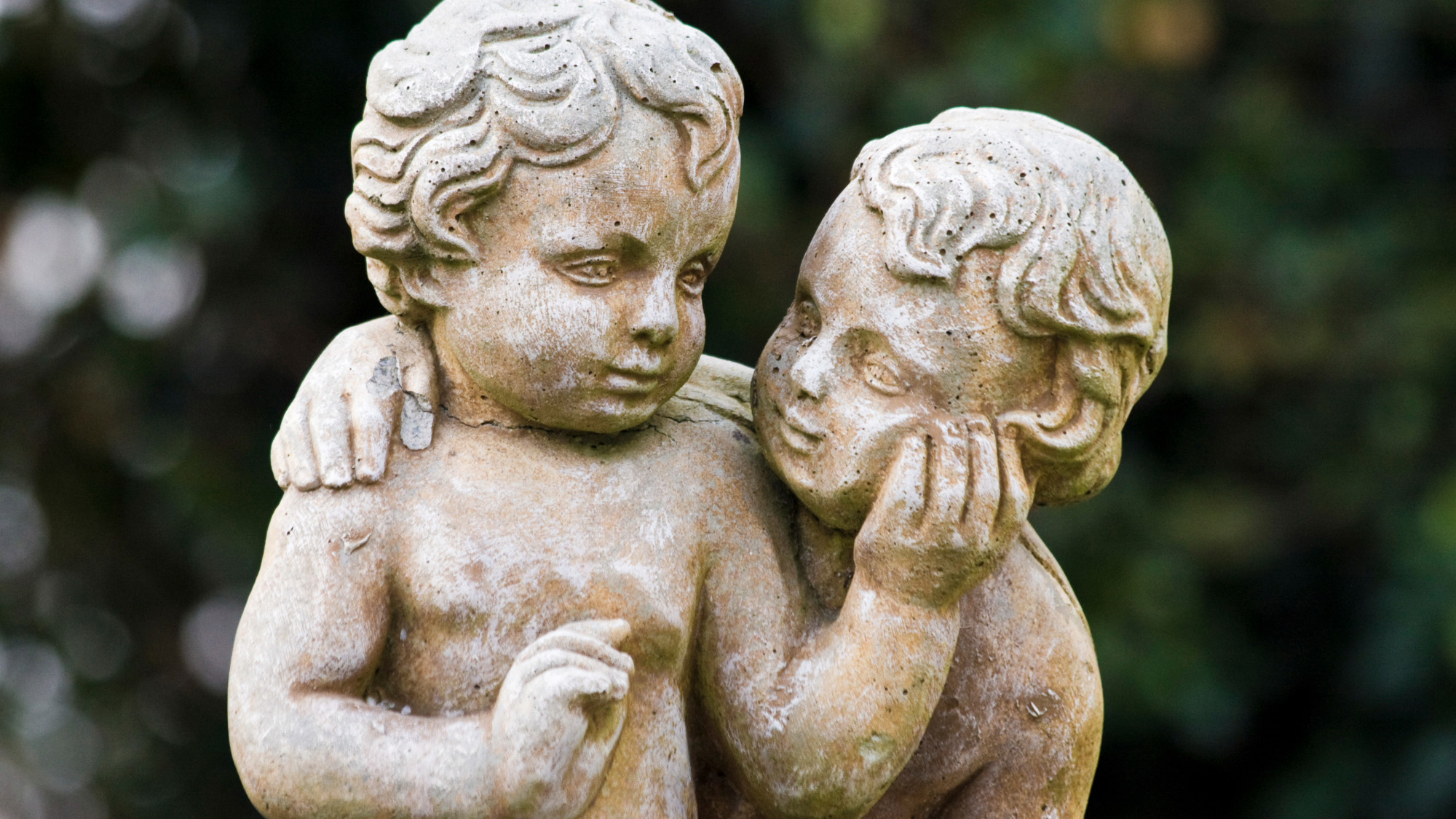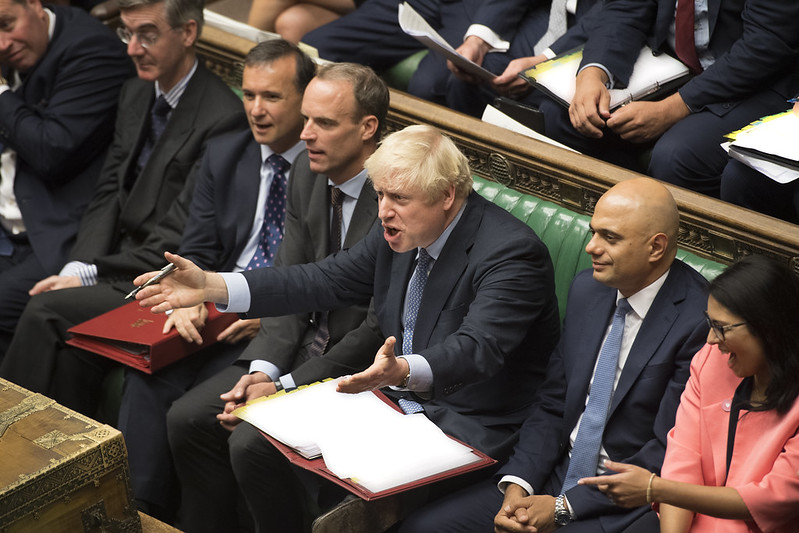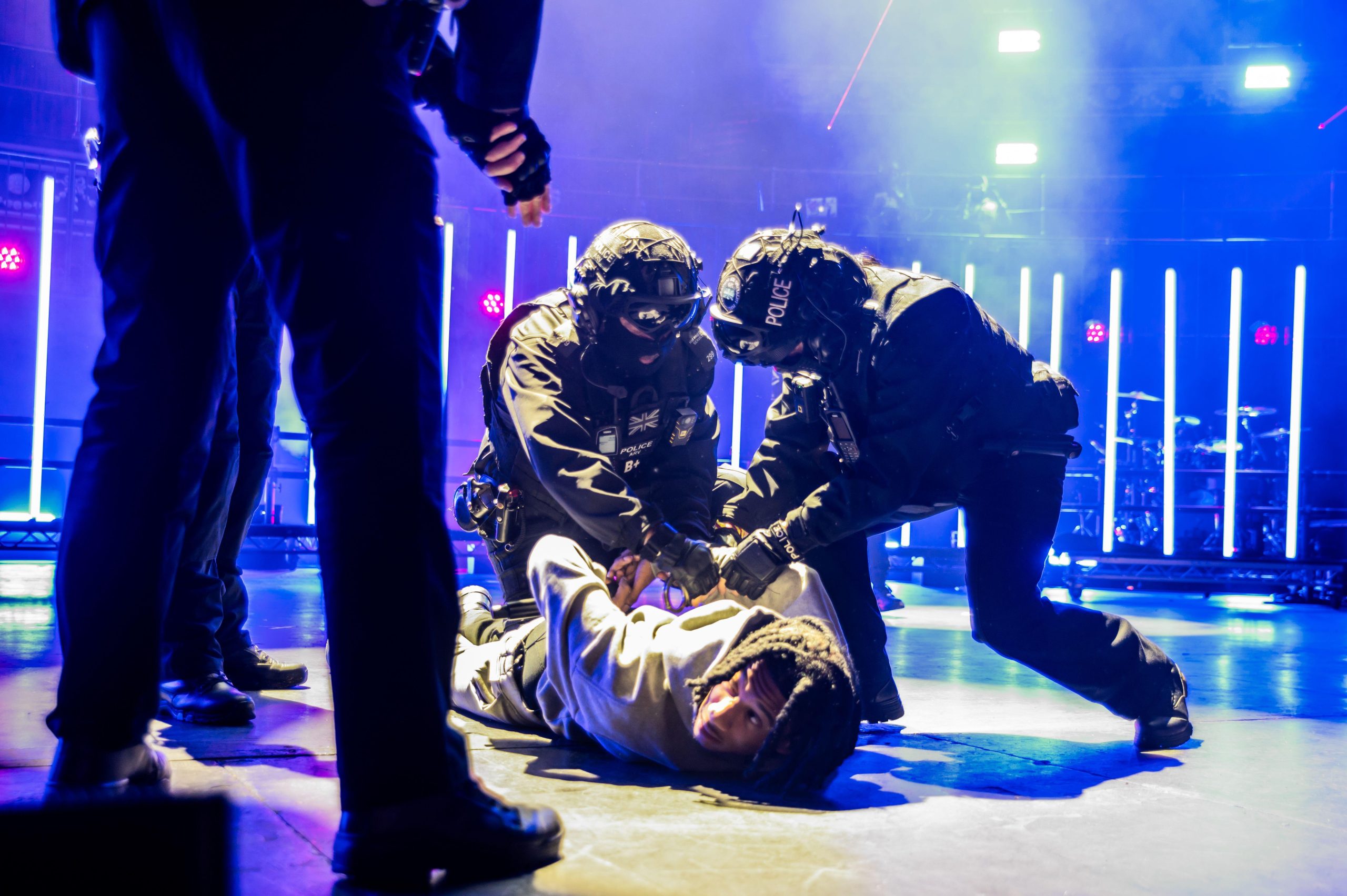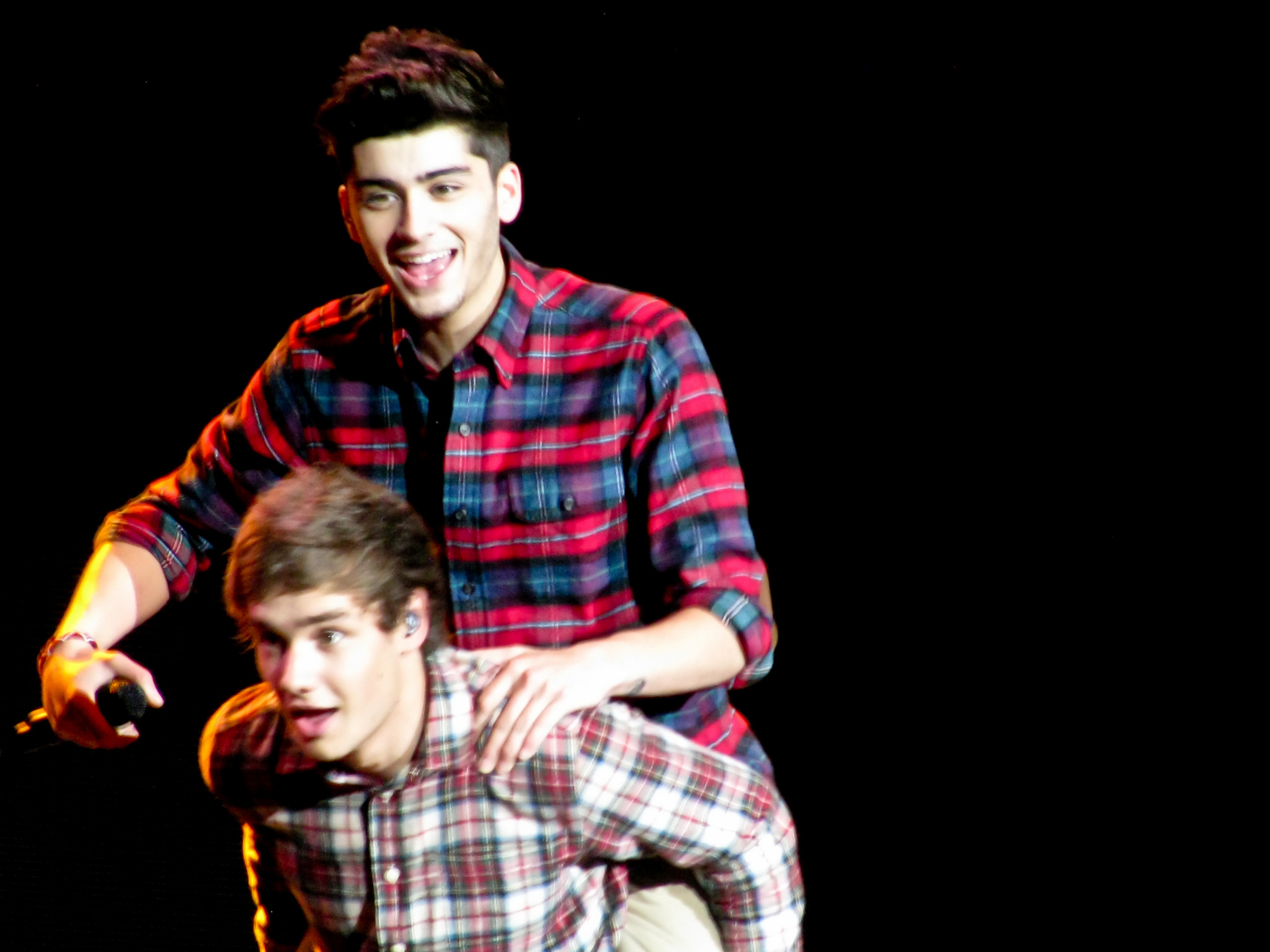[vc_row][vc_column][vc_column_text css=”.vc_custom_1579268532812{margin-bottom: 30px !important;background-color: #f5f5f5 !important;}”]Please note: This is part of a series of guides produced by Index on Censorship on the laws related to freedom of expression in England and Wales. They are intended to help understand the protections that exist for free speech and where the law currently permits restrictions.[/vc_column_text][vc_column_text]This guide is available to download as a PDF here.[/vc_column_text][vc_single_image image=”112028″ img_size=”large” add_caption=”yes” alignment=”center”][vc_raw_html]JTNDZGl2JTIwc3R5bGUlM0QlMjJmb250LXNpemUlM0EuOWVtJTNCcGFkZGluZyUzQTVweCUzQmJhY2tncm91bmQtY29sb3IlM0FXaGl0ZVNtb2tlJTNCZmxvYXQlM0FyaWdodCUzQm1hcmdpbi1sZWZ0JTNBMTVweCUzQndpZHRoJTNBNDAlMjUlM0IlMjIlM0UlM0NoNCUzRVRhYmxlJTIwb2YlMjBjb250ZW50cyUzQyUyRmg0JTNFJTBBJTNDb2wlM0UlMEElM0NsaSUzRSUzQ2ElMjBocmVmJTNEJTIyJTIzdG9wJTIyJTNFQ2hpbGQlMjBwcm90ZWN0aW9uJTIwb2ZmZW5jZXMlMjBleHBsYWluZWQlM0MlMkZhJTNFJTNDJTJGbGklM0UlMEElM0NsaSUzRSUzQ2ElMjBocmVmJTNEJTIyJTIzY3AyJTIyJTNFT3ZlcnZpZXclMjBvZiUyMFVLJTIwbGF3cyUzQyUyRmElM0UlM0MlMkZsaSUzRSUwQSUzQ2xpJTNFJTNDYSUyMGhyZWYlM0QlMjIlMjNjcDMlMjIlM0VQcm90ZWN0aW9uJTIwb2YlMjBDaGlsZHJlbiUyMEFjdCUyMDE5NzglMjAlRTIlODAlOTMlMjBUYWtpbmclMkMlMjBtYWtpbmclMkMlMjBzaG93aW5nJTIwYW5kJTIwZGlzdHJpYnV0aW5nJTIwaW5kZWNlbnQlMjBwaG90b2dyYXBocyUyMG9mJTIwY2hpbGRyZW4lM0MlMkZhJTNFJTNDJTJGbGklM0UlMEElM0NsaSUzRSUzQ2ElMjBocmVmJTNEJTIyJTIzY3A0JTIyJTNFQ29yb25lcnMlMjBhbmQlMjBKdXN0aWNlJTIwQWN0JTIwMjAwOSUyMCVFMiU4MCU5MyUyMFBvc3Nlc3Npb24lMjBvZiUyMHByb2hpYml0ZWQlMjBub24tcGhvdG9ncmFwaGljJTIwaW1hZ2VzJTIwb2YlMjBjaGlsZHJlbiUzQyUyRmElM0UlM0MlMkZsaSUzRSUwQSUzQ2xpJTNFJTNDYSUyMGhyZWYlM0QlMjIlMjNjcDUlMjIlM0VDcmltaW5hbCUyMEp1c3RpY2UlMjBBY3QlMjAxOTg4JTIwJUUyJTgwJTkzJTIwUG9zc2Vzc2lvbiUyMG9mJTIwYW4lMjBpbmRlY2VudCUyMHBob3RvZ3JhcGglMjBvZiUyMGElMjBjaGlsZCUzQyUyRmElM0UlM0MlMkZsaSUzRSUwQSUzQ2xpJTNFJTNDYSUyMGhyZWYlM0QlMjIlMjNjcDYlMjIlM0VEZWZlbmNlcyUyMHRvJTIwY2hpbGQtcHJvdGVjdGlvbiUyMGNyaW1lcyUzQyUyRmElM0UlM0MlMkZsaSUzRSUwQSUzQ2xpJTNFJTNDYSUyMGhyZWYlM0QlMjIlMjNjcDclMjIlM0VUaGUlMjBMYW56YXJvdGUlMjBDb252ZW50aW9uJTNDJTJGYSUzRSUzQyUyRmxpJTNFJTBBJTNDbGklM0UlM0NhJTIwaHJlZiUzRCUyMiUyM2NwOCUyMiUzRU9ubGluZSUyMEhhcm1zJTIwV2hpdGUlMjBQYXBlciUzQyUyRmElM0UlM0MlMkZsaSUzRSUwQSUzQ2xpJTNFJTNDYSUyMGhyZWYlM0QlMjIlMjNjcDklMjIlM0VUaGUlMjBwb3dlcnMlMjBvZiUyMHRoZSUyMHBvbGljZSUyMGFuZCUyMHByb3NlY3V0aW5nJTIwYXV0aG9yaXRpZXMlM0MlMkZhJTNFJTNDJTJGbGklM0UlMEElM0MlMkZvbCUzRSUzQyUyRmRpdiUzRQ==[/vc_raw_html][vc_custom_heading text=”1. Child protection offences explained” font_container=”tag:h1|text_align:left” use_theme_fonts=”yes” el_id=”ct1″][vc_column_text]Child protection is a sensitive area of law and a deserved focus of public concern.
As there is no clear legal definition of the concept of indecency, and because of the sensitivity of the matter, decisions made by the police and the Crown Prosecution Service (CPS) can be subjective and inconsistent, and in the wrong context can seriously compromise freedom of expression rights. For that reason, it is important to be aware of the legal framework and, if you are concerned that your artistic work, journalistic work or other projects or behaviour will be scrutinised under child protection laws, to take practical preparatory steps at an early stage.
The offences set out in law cover a broad spectrum of behaviour. If someone makes, displays or possesses images of children that could be considered to be indecent, obscene or pornographic, it could be a serious criminal offence. The circumstances or motivation of a defendant are not relevant to determining whether or not the image is indecent. It is for a jury to decide whether or not images are indecent, by asking whether the images offend based on recognised standards of propriety. Information about an investigation, an arrest and a prosecution can be kept and may be legally disclosed to others by police in certain circumstances. Convicted people may be treated as sex offenders depending on the seriousness of the charges.[/vc_column_text][/vc_column][/vc_row][vc_row][vc_column][vc_separator el_width=”80″ el_id=”cp2″][/vc_column][/vc_row][vc_row][vc_column][vc_custom_heading text=”2. Overview of UK laws” font_container=”tag:h1|text_align:left” use_theme_fonts=”yes”][vc_column_text]The UK laws that can be used to prosecute people in relation to images of children include:
- Protection of Children Act 1978, which prohibits making, taking, permitting to be taken, distributing or showing indecent photographs (including film or computer data such as scans) or “pseudo-photographs” of children. As defined by the act, “children” are people under 18.
- Criminal Justice Act 1988, which creates an offence of possessing an indecent photograph or “pseudo-photograph” of a child.
- Coroners and Justice Act 2009, which criminalises the possession of non-photographic images of children (including cartoons, paintings and drawings) which are pornographic and grossly offensive, disgusting or otherwise of an obscene character.
- Children and Young Persons (Harmful Publications) Act 1955, which criminalises the printing, publishing, hiring or selling of a book, magazine or similar work, which consists mostly of stories told in pictures and is of a kind likely to fall into the hands of children or young people, and which portrays acts of violence or cruelty, the commission of crimes or repulsive incidents in such a way that it might “tend to corrupt” a child reader. There have been very few prosecutions for this offence.
- Indecent Displays (Control) Act 1981, which criminalises the public display of “indecent matter”.
- Obscene Publications Act 1959, which criminalises the publication of an “obscene article”.
- Police and Criminal Evidence Act 1984, which gives police a range of statutory powers to stop, search, and arrest individuals.
- Serious Crime Act 2015, which created the offence of being “in possession of any item that contains advice or guidance about abusing children sexually”. The crime is called “possession of paedophile manual”. If a defendant has material containing advice or guidance about how to make indecent photographs (but not pseudo-photographs) of children they will likely be committing an offence under this act.
These laws are intended to protect the rights of children. The police and prosecuting authorities should also consider the free-expression rights of alleged perpetrators under the European Convention on Human Rights (ECHR) when making decisions about whether to investigate or prosecute.[/vc_column_text][/vc_column][/vc_row][vc_row][vc_column][vc_separator el_width=”80″ el_id=”cp3″][/vc_column][/vc_row][vc_row][vc_column][vc_custom_heading text=”3. Protection of Children Act 1978 – Taking, making, showing and distributing indecent photographs of children” font_container=”tag:h1|text_align:left” use_theme_fonts=”yes”][vc_column_text]Individuals may commit a criminal offence under the Protection of Children Act 1978 in relation to indecent photographic, film and “pseudo-photographic” images (which are defined as non-photographic images that appear to be photographs – these could be computer-generated). Under the legislation, “photograph” includes negatives, tracings of photographs and data stored on a computer or electronically that is capable of being converted into photographs. For a photograph or film to be considered indecent under the law, it must be found by the jury or court to offend recognised standards of propriety. This is an extremely fluid test that changes along with society’s changing expectations.
The criminal offence set out in Section 1 of the 1978 act prohibits the making, taking, permitting to be taken, distributing, or possessing (with a view to distributing) indecent photographs or pseudo-photographs of children. “Making” an indecent image is defined as “to cause [it] to exist, to produce by action, to bring about” (R v Bowden 2000). It includes intentionally opening an email attachment knowing that it contains (or is likely to contain) an indecent photograph of a child.
Equally, accessing a pornographic website and knowing that indecent images of children will automatically be generated as on-screen “pop-ups” amounts to “making” an indecent image of a child (as will knowing the image will be automatically saved to a hard drive, and keeping it there). Downloading an image from a website on to a computer screen and “live-streaming” indecent images also constitute “making” an indecent image (R v Smith and R v Jayson 2002). The making must “be a deliberate and intentional act with knowledge that the image made was, or was likely to be, an indecent photograph of a child (R v Smith and R v Jayson 2002). An unintended copying or storing of an image does not constitute the offence of “making” an indecent image. Consequently, someone who opens a doubtful email attachment that turns out to be an indecent photograph or whose computer automatically saves it in its cache is not guilty of making those photographs (Atkins v DPP and Goodland v DPP 2000).
“Sexting” (the creating, sharing, sending or posting of sexually explicit messages or images via mobile phones or other electronic devices), if it involves someone under the age of 18, may amount to distributing or showing an indecent photograph of a child under Section 1(b) of the Protection of Children Act.[/vc_column_text][/vc_column][/vc_row][vc_row][vc_column][vc_separator el_width=”80″ el_id=”cp4″][/vc_column][/vc_row][vc_row][vc_column][vc_custom_heading text=”4. Coroners and Justice Act 2009 – Possession of prohibited non-photographic images of children” font_container=”tag:h1|text_align:left” use_theme_fonts=”yes”][vc_column_text]It is a crime under the Coroners and Justice Act 2009 to possess non-photographic images that are grossly offensive, disgusting or otherwise of an obscene character. Non-photographic images include computer-generated images (CGIs), cartoons, manga images, and drawings. They can be still or moving, and produced by any means. The images must also be pornographic, meaning it can be assumed they were principally or solely produced for the purpose of sexual arousal. The image must also focus solely or principally on the anal or genital region of a child, or show certain specific sexual acts (such as oral sex with, or in the presence of, a child). There is an exclusion from the offence for works classified by the British Board of Film Classification.[/vc_column_text][vc_column_text]
The difference between Protection of Children Act 1978 and Coroners and Justice Act 2009 crimes
Photos and films (and images appearing to be photos)
Protection of Children Act 1978
A photograph of a naked child in a room full of clothed people could be considered indecent under the Protection of Children Act if it offends what the jury considers the “recognised standards of propriety”. This will depend on the context and all the circumstances surrounding the image’s creation.
Drawings, paintings and sculptures
Coroners and Justice Act 2009
Under the Coroners and Justice Act there is a higher test for a drawing, painting or sculpture. It needs to be grossly offensive, disgusting, or obscene and pornographic and it needs to depict certain sexual acts featuring children or certain sexual parts of a child’s body. For example, a drawing of a 14-year-old masturbating could be prohibited because it may be considered pornographic (meaning it can be reasonably assumed to have been produced for the purpose of sexual arousal), and obscene, and it involves the sexual act of a child.[/vc_column_text][vc_column_text css=”.vc_custom_1579691218533{margin-top: 15px !important;margin-bottom: 15px !important;padding-top: 5px !important;padding-right: 10px !important;padding-bottom: 10px !important;padding-left: 10px !important;background-color: #21277a !important;}”]
Case study: Obscene manga?
In October 2014, Robul Hoque admitted 10 counts of possessing prohibited images of children at Teesside Crown Court. Police seized Hoque’s computer from his home in June 2012 and found 288 still and 99 moving images. The images were in Japanese manga or anime-style and were not of real people. However, they were classified as prohibited images because they depicted young girls, some in school uniforms and some engaging in sexual activity.
Hoque had been convicted some six years prior of making “indecent pseudo-photographs” for having realistic-seeming “Tomb Raider-style” computer-generated pictures of fictional children.
The conviction was criticised in online media. Spiked magazine pointed out that the material Hoque was looking at did not involve any actual children (only drawings) and he had no convictions for child abuse or possession of actual child pornography, and that he was not a threat to children. His consumption of manga magazines could therefore not be said to result in any exploitation of children or create a market for that exploitation (which are the usual arguments for criminalising possession of indecent images of children). In the writer’s words: “The fact that possessing something in private, which gives a window into your thoughts and nothing else, can now be a crime, shows how insidious and deranged the moral panic over paedophilia has become.”[/vc_column_text][/vc_column][/vc_row][vc_row][vc_column][vc_separator el_width=”80″ el_id=”cp5″][/vc_column][/vc_row][vc_row][vc_column][vc_custom_heading text=”5. Criminal Justice Act 1988 – Possession of an indecent photograph of a child” font_container=”tag:h1|text_align:left” use_theme_fonts=”yes”][vc_column_text]Under the Criminal Justice Act 1988, it is a crime to simply possess an indecent photograph (or pseudo-photograph) of a child. People “possess” a photograph if they are capable of accessing or retrieving it and they are aware that they possess an image or images. Photos are not retrievable if they are located on a hard drive that requires specialist software to access, which the suspect does not have. To possess the photo, the suspect does not need to have opened or scrutinised it. A person receiving unsolicited indecent images on WhatsApp, which automatically download to the phone’s memory, will likely be found to possess indecent photographs. However, if the suspect has not seen the photos, and has no reason to believe they are indecent, then he or she will have a defence under Section 160(2)(b).[/vc_column_text][vc_column_text css=”.vc_custom_1579690479213{margin-top: 15px !important;margin-bottom: 15px !important;padding-top: 5px !important;padding-right: 10px !important;padding-bottom: 10px !important;padding-left: 10px !important;background-color: #21277a !important;}”]
Case study: Possession of digital files
The case of R v Cyprian Okoro 2018 concerned London doctor Cyprian Okoro, who received an unsolicited indecent images of children on WhatsApp. It was downloaded on to his phone and found in a vault application, which is a storage area protected by a password. It was impossible to tell whether the video had been viewed.
Okoro said that when he received the message on WhatsApp he did not view it and intended to delete it, but it went into the vault by mistake. He did not realise it was indecent until he viewed it later with his lawyer and the police. The trial judge initially told the jury that Okoro had admitted that he “possessed” the indecent images, and the only question was whether or not he had a defence.
Okoro’s defence lawyer then raised the question of whether “possessing” an indecent photo required the defendant to know he possessed the images and that the images were indecent. The court said that possession required only that the suspect was aware they had the image, and they had the capacity to access and retrieve it. The suspect did not have to know that the image was indecent.[/vc_column_text][/vc_column][/vc_row][vc_row][vc_column][vc_separator el_width=”80″ el_id=”cp6″][/vc_column][/vc_row][vc_row][vc_column][vc_custom_heading text=”6. Defences to child-protection crimes” font_container=”tag:h1|text_align:left” use_theme_fonts=”yes”][vc_column_text]If the CPS decides to prosecute, there are limited defences available. In the case of distributing or showing indecent photographs of children prohibited under the Protection of Children Act 1978, and possessing indecent photographs under the Criminal Justice Act 1988, alleged perpetrators have to demonstrate that:
- they had not seen the images and had no reason to suspect they were prohibited;
- or they had a “legitimate reason” for being in possession of them or showing or distributing them.
If the child in the photograph is over 16 and is the spouse or civil partner of the perpetrator, no offence under Section 1 of the Protection of Children Act has been committed. This includes making or taking an indecent photograph. The same is true for the offence of possessing indecent photographs under the Criminal Justice Act.
There is also an additional defence under the Criminal Justice Act that the photo was sent to the defendant without any prior request made by him or her, or on his or her behalf, and that the defendant did not keep it for an unreasonable time. There is very little information available on what amounts to an “unreasonable time”. CPS guidance states that this is a question that will be determined by juries on a case-by-case basis.
The leading case on the concept of “legitimate reason” (Atkins v Director of Public Prosecutions 2000) suggests that the defence applies only in very restricted circumstances, such as when it is necessary to possess the images to conduct forensic tests or for legitimate research. It also suggests that any court should approach such a defence with scepticism. The court in Atkins said that:
“The central question where the defence is legitimate research will be whether the defendant is essentially a person of unhealthy interests in possession of indecent photographs, or by contrast a genuine researcher with no alternative but to have this sort of unpleasant material in his possession. In other cases there will be other categories of legitimate reasons advanced. They will each have to be considered on their own facts.”
As stated above, to a certain extent those who could be considered to have a “legitimate reason” – such as artists and galleries – can rely on their right to freedom of expression under Article 10 of the ECHR: the right to receive and impart opinions, information and ideas, including those which shock disturb and offend. That right is qualified by the need to protect the rights and freedoms of others (in this context, children), and a 2001 case (R v Smethurst 2002) found that the Protection of Children Act 1978 offence was compatible with Article 10 rights to free expression under the ECHR.
In the context of child protection, the rights of children not to be exploited and those of a young audience will be set against the right to freedom of expression. That means the police and courts are permitted in some circumstances to act in ways that will compromise the freedom of expression rights of individuals. Any decision they make will require these competing objectives to be balanced.[/vc_column_text][/vc_column][/vc_row][vc_row][vc_column][vc_separator el_width=”80″ el_id=”cp7″][/vc_column][/vc_row][vc_row][vc_column][vc_custom_heading text=”7. The Lanzarote Convention” font_container=”tag:h1|text_align:left” use_theme_fonts=”yes”][vc_column_text]In 2018, the UK ratified the Council of Europe Convention on the Protection of Children Against Sexual Exploitation and Sexual Abuse, also known as the “Lanzarote Convention”. It requires the UK to criminalise many offences concerning child pornography, including “knowingly obtaining access, through information and communication technologies, to child pornography”. This may well be covered through the Protection of Children Act 1978 offence of making an indecent image of a child (which can cover downloading such images, or knowingly entering websites where such pop-up images will appear) or the crime of possessing an indecent image under the Criminal Justice Act 1988. Alternatively, the UK may be obliged to create a more specific criminal offence.[/vc_column_text][/vc_column][/vc_row][vc_row][vc_column][vc_separator el_width=”80″ el_id=”cp8″][/vc_column][/vc_row][vc_row][vc_column][vc_custom_heading text=”8. Online Harms White Paper” font_container=”tag:h1|text_align:left” use_theme_fonts=”yes”][vc_column_text]The government’s 2019 Online Harms White Paper proposed establishing a statutory duty of care to make companies operating on the internet more responsible for their users’ safety and to “tackle harm caused by content or activity on their services.” An independent regulator would be set up to enforce compliance. The white paper stated that enforcement in respect of activity involving harm to children would be prioritised.[/vc_column_text][/vc_column][/vc_row][vc_row][vc_column][vc_separator el_width=”80″ el_id=”cp9″][/vc_column][/vc_row][vc_row][vc_column][vc_custom_heading text=”9. The powers of the police and prosecuting authorities” font_container=”tag:h1|text_align:left” use_theme_fonts=”yes”][vc_column_text]Under Section 4 of the Protection of Children Act 1978, a judge may issue a warrant authorising police to enter and search any premises where they reasonably believe an indecent photograph (or pseudo-photograph) of a child will be found. The warrant can permit the police to seize any articles they reasonably believe are – or include – indecent photographs of children.
Section 67 of the Coroners and Justice Act 2009 applies these powers to the “possession of prohibited images of children” offence. So if police reasonably believe they will find prohibited images of children other than photographs (such as computer-generated images, cartoons, manga images and drawings), they can request a warrant from a judge to search the place and seize any prohibited material.
If the police seize indecent photographs or prohibited images during a search, they may apply to court to “forfeit” them (that is, destroy or condemn them), or they may automatically do so if no one claims the property after the police inform all possible owners of the property of their intention to forfeit the property.
The Indecent Displays (Control) Act 1981 empowers magistrates to issue a warrant to a police officer who has reasonable grounds for suspecting someone is displaying indecent matter to enter premises and seize any articles used in the commission of the indecent-matter crime. The act also empowers a police officer to “seize any article which he has reasonable grounds for believing to be or to contain indecent matter and to have been used in the commission” of the indecent-matter offence.
Prosecutions under the Protection of Children Act 1978, the Criminal Justice Act 1988 and the Coroners and Justice Act 2009 require the consent of the Director of Public Prosecutions. As with all criminal cases, the Crown Prosecution Service (CPS) will consider whether it is in the “public interest” to prosecute, taking into consideration the competing rights of the alleged perpetrator and others, including children. A reading of the CPS code, which governs its decisions and its list of public-interest factors, suggests that there will be a lower threshold for prosecutions involving offences against children.[/vc_column_text][vc_column_text css=”.vc_custom_1579690942191{margin-top: 15px !important;margin-bottom: 15px !important;padding-top: 5px !important;padding-right: 10px !important;padding-bottom: 10px !important;padding-left: 10px !important;background-color: #21277a !important;}”]
Convention on the Rights of the Child
The Convention on the Rights of the Child is an international treaty established in 1989 and signed by 196 countries. It sets out the civil, political, educational, health and other rights of children which countries signing up to the treaty agree to respect. For example, with regard to free expression, the treaty says: “States parties shall assure to the child who is capable of forming his or her own views the right to express those views freely in all matters affecting the child, the views of the child being given due weight in accordance with the age and maturity of the child.” It also lists a separate free-expression right for children in Article 13. Under Article 34, the signatories agree to “protect the child from all forms of sexual exploitation and sexual abuse”, including the “exploitative use of children in pornographic performances and materials.” The UK ratified the treaty in 1991. The USA has signed but not ratified it, meaning it intends to comply with the treaty but is not bound by it.[/vc_column_text][/vc_column][/vc_row][vc_row][vc_column][vc_separator el_width=”80″][/vc_column][/vc_row][vc_row][vc_column][vc_custom_heading text=”Ackowledgements” use_theme_fonts=”yes”][vc_column_text]This guide was produced by Index on Censorship, in partnership with Clifford Chance.[/vc_column_text][/vc_column][/vc_row]






